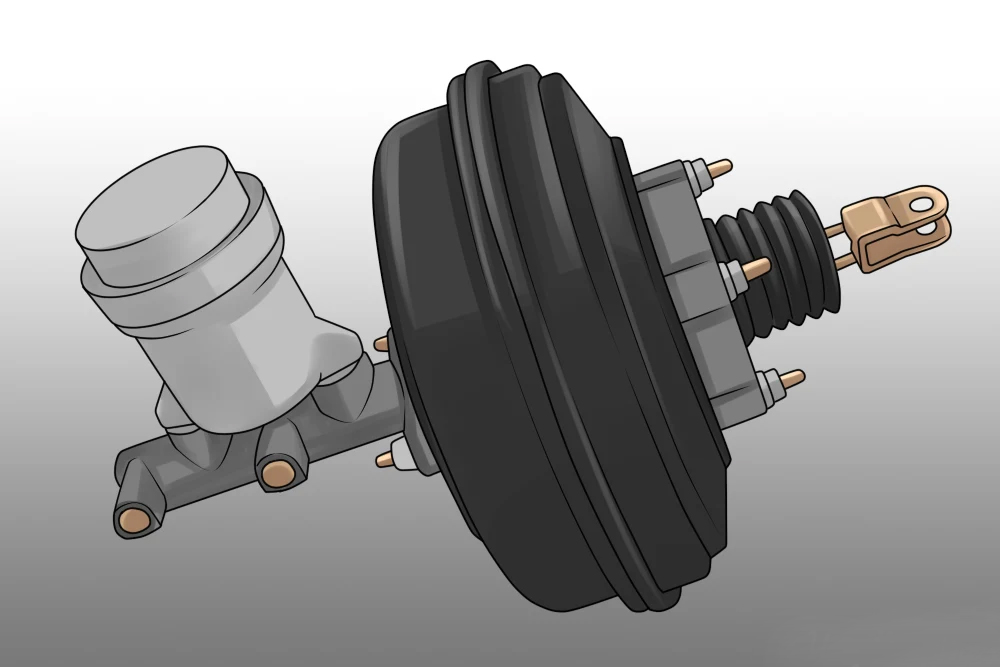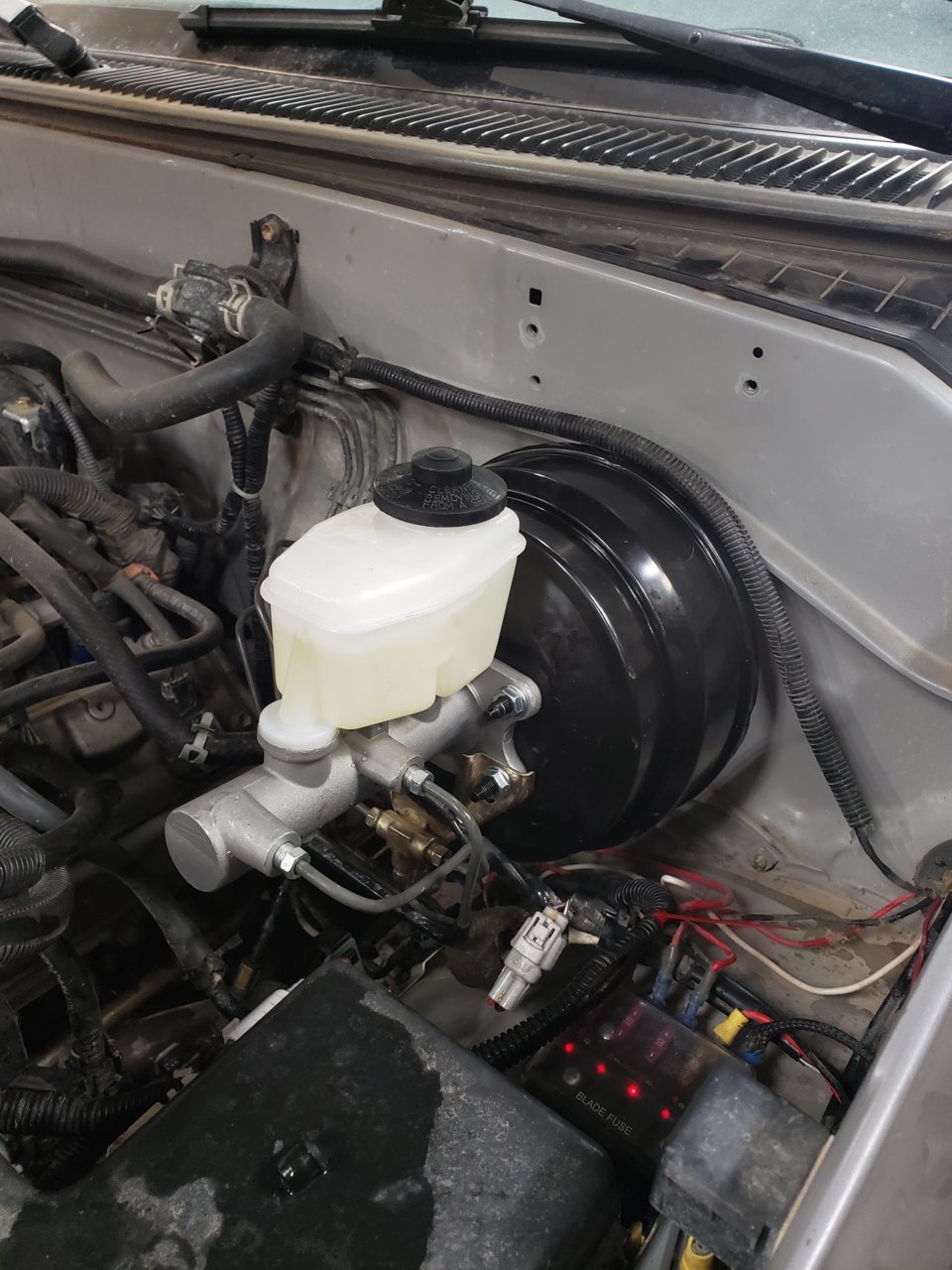
Noticing a hard brake pedal or longer stopping distance? It might be time to replace your brake booster. In simple terms, a brake booster uses vacuum (or an electric assist on newer cars) to multiply your foot pressure so the brakes work with far less effort. When it fails, braking becomes harder, riskier, and downright unsafe.
Why this matters in 2025: vehicle safety standards are stricter, and many models now use electronic brake boosters (E-BB) or vacuum pumps, especially hybrids/EVs. Ignoring a failing booster can compromise ABS/ESC performance.
What a Brake Booster Does 🧠➡️💪
The booster sits between the brake pedal and the master cylinder. It uses engine vacuum (or an electric motor) to reduce pedal effort and help the ABS module apply consistent hydraulic pressure to the calipers/wheel cylinders.
Quick Stats You Should Know 📊
- Brake-related defects are a leading mechanical factor in crashes, according to multiple NHTSA analyses. Keeping the braking system healthy is a top safety priority.
- Labor rates and parts prices increased across many regions from 2023 to 2025, so timely repairs can save money versus waiting for bigger failures.
Common Symptoms of a Failing Brake Booster 🚨
- 🦵 Hard brake pedal: requires much more force to stop.
- ⏱️ Longer stopping distance: braking feels weak or delayed.
- 🐍 Hissing sound at the pedal or under the dash (vacuum leak).
- ⚠️ Rough idle or stalling when pressing the brake (vacuum leak to intake).
- 🔔 Brake/ABS warning lights or inconsistent pedal feel.
- 🛢️ Fluid looks normal, but performance is poor (points to assist issue, not hydraulics).

Do I Need Brake Booster Repair or Replacement? 🧪
Try this quick test: with the engine off, pump the brake pedal 4–5 times (it should get firm). Keep pressure on the pedal and start the engine. If the booster is healthy, the pedal should drop slightly as vacuum assist kicks in. No change = likely booster/tube/check-valve issue.
Tools & Supplies (2025 Checklist) 🧰
- Socket set, screwdrivers, line (tube) wrench
- Torque wrench (follow factory specs)
- Brake fluid (DOT rating as specified by the manufacturer)
- Floor jack + jack stands or a lift
- Replacement brake booster (vacuum or electronic type as per vehicle)
- Hand vacuum pump (for diagnostics), new vacuum hose/check valve (if needed)
- Scan tool capable of ABS bleed procedures (many 2020–2025 vehicles)
- PPE: gloves, eye protection
Brake Booster Replacement: Step-by-Step 🔧
1) Prepare the vehicle
- Park on level ground, set parking brake, disconnect the battery (for vehicles with electronic boosters/airbags near the column).
- On many models you don’t need to remove wheels. Access is at the firewall (engine bay) and under the dash.
2) Access the master cylinder and booster
- Remove intake ducting/covers if they block access.
- Unbolt the master cylinder from the booster. If brake lines have enough slack, gently move the master forward without disconnecting lines. If not, use a line wrench to disconnect the lines and cap them to avoid contamination (you’ll bleed brakes later).
3) Disconnect inside the cabin
- Under the dash, remove the retaining clip/pin from the brake pedal pushrod.
- Unbolt the booster from the firewall.
4) Remove the booster
- Pull the booster from the engine bay.
- Disconnect the vacuum hose and check valve. Inspect/replace brittle hoses and faulty check valves.
5) Install the new booster
- Position the new booster on the firewall and torque mounting nuts to spec.
- Reconnect the pushrod to the brake pedal. Adjust pushrod free-play per the service manual (critical for proper pedal height and brake release).
- Reconnect the vacuum hose/check valve or the electrical connector if using an electronic booster.
6) Refit the master cylinder and lines
- Bolt the master cylinder to the booster and torque to spec.
- If you disconnected brake lines, reconnect and proceed to bleeding.
7) Bleed the braking system
- Top up the reservoir with the correct fluid.
- Bleed per factory sequence. For vehicles with ABS or electronic boosters, perform the scan-tool “ABS service/bleed” procedure to purge internal valves.
8) Final checks
- Start the engine: confirm pedal assist and consistent height.
- Check for vacuum leaks, warning lights, and fluid leaks. Road-test at low speed first.
Costs in 2025: What to Expect 💵
- Traditional vacuum booster replacement: $450–$900 total (parts ~$180–$500, labor ~$250–$400 depending on access/region).
- Electronic brake booster (some 2019–2025 vehicles, hybrids/EVs): $900–$1,800+ (higher part cost; scan-tool bleed required).
- Prices vary by make/model, region, and shop rate. Prompt repairs help avoid extra costs (master cylinder/ABS contamination, rotor overheating).
Pro Tips for 2025 Vehicles 🧠
- Always inspect the check valve and vacuum hose; many “booster” complaints are actually vacuum supply issues.
- Fix oil or coolant leaks that can degrade booster diaphragms and nearby rubber parts over time.
- Electronic boosters require proper initialization with a scan tool—skip this and you risk a soft or inconsistent pedal.

FAQ: Brake Booster Replacement (2025) ❓
How do I know it’s the booster and not the master cylinder?
A hard pedal with normal fluid level and no external leaks points to the booster or its vacuum supply. A sinking/soft pedal usually points to hydraulic issues (master cylinder, leaks, air).
Can I still drive with a bad brake booster?
Only in an emergency and very carefully. Stopping distance increases significantly. If the pedal is extremely hard or the engine stalls when braking, tow the vehicle.
Do I have to bleed the brakes after booster replacement?
If you disconnected brake lines or opened the hydraulic system—yes. Many 2020–2025 vehicles also require a scan-tool ABS bleed routine.
What about the check valve and vacuum hose?
Replace brittle hoses and any failed check valve. A bad valve causes hard pedal and poor assist, especially after the engine sits.
How long does the job take?
Typically 1.5–3.0 hours for vacuum boosters; 2.5–4.0 hours for electronic boosters (access and scan-tool procedures can add time).
Can cold weather affect the booster?
Yes. Extreme cold can stiffen rubber diaphragms and expose weak seals/hoses. Corrosion in road-salt regions can also affect mounting and check valves.
Is an OEM booster necessary?
Quality OEM or OE-equivalent parts are recommended. On vehicles with E-BB, stick to OEM to ensure correct calibration and software compatibility.
Why does my engine stumble when I press the brake?
Likely a vacuum leak in the booster or hose. The leak leans out the air-fuel mixture, causing rough idle or stalling when you apply the brakes.
How often do boosters fail?
There’s no fixed interval. Age, heat, fluid contamination, and vacuum hose/check-valve condition are the main factors. Failures become more common on vehicles 8–12+ years old.
Do hybrids/EVs have boosters?
They typically use electronic brake boosters (no engine vacuum). Diagnosis and bleeding require a scan tool and specific service procedures.
Bottom Line ✅
A healthy brake booster is essential for safe, effortless braking. If you notice a hard pedal, hissing, or longer stops, diagnose the vacuum supply and booster quickly. Repairing it the right way—using quality parts, correct torque, and proper bleeding—keeps your 2025 daily drive safe and confidence-inspiring. 🛡️